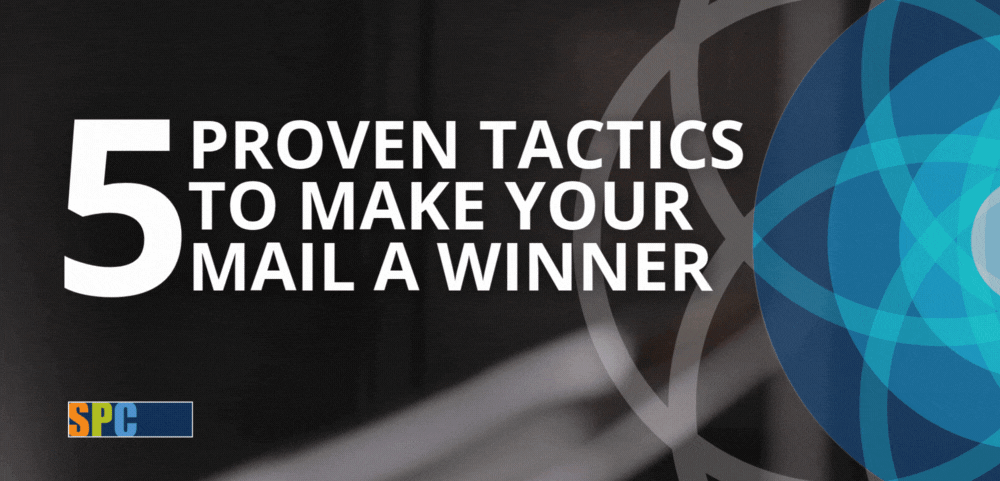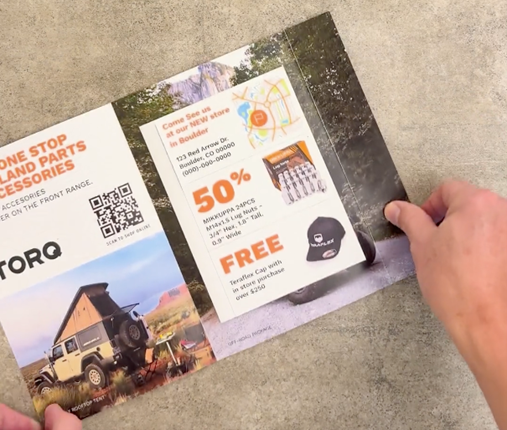
Eric Kuhn is a Strategic Accounts Executive at SPC. In this SPC blog, Eric shares his insights and advice on how marketers can generate fresh, innovative ideas for the mail formats.
Becoming Intentional Keeps Mail Campaigns Fresh & Effective
In direct mail, familiarity can be both a strength and a weakness. Many brands stick with the same “control format” year after year; a letter package that’s worked well enough, or a postcard that’s simple to execute. But in doing so, they often miss opportunities to lift response, save money, or re-engage audiences in fresh ways.
At SPC, we’re always looking for ways to push boundaries, whether it’s through format innovation, postal optimization, or sensory design. The best mail doesn’t just arrive in the mailbox; it earns your attention and ideally motivates you to take action.
As I’ve shared recently on my regular LinkedIn series called MailBox Monday, some of the most successful campaigns I’ve seen combine creativity with purpose: a clever die-cut, a tactile finish, or even a dimensional element that makes someone pause and pay attention.
Tap into the Power of Touch
In a digital-first world, physical mail holds a unique advantage – it’s something people can touch, feel, and physically interact with.
Studies show that tactile experiences activate stronger memory pathways, which means the right paper, finish, or texture can make a meaningful consumer impact. We’ve seen this firsthand in our own case studies where switching from a simple self-mailer to a folded format with a soft-touch coating didn’t just increase engagement and boost response – it dramatically improved campaign ROI by reducing postage costs. That’s because incorporating a simple element, such as soft touch, triggers a 5% postage discount from the USPS.
When designing mail, think beyond ink and paper. Consider coatings like soft touch, raised UV, or even foil stamping to create a moment of connection.
Think Format First
Before diving into creative, start with a clear understanding of the space requirements to deliver the desired recipient experience. How much content (copy, imagery, charts, etc.) is really needed? Are there content privacy issues about which to be mindful? Will there be a lot of required legal copy with which to deal?
We typically review your control package (whatever has worked, or not worked, for you most recently). Perhaps a few smart adjustments to your control format will deliver better performance or cost efficiency.
One of our clients saw significant savings simply by shifting to a more efficient “slit and nest” production method, which simplified inserting and reduced postal complexity. Strategic adjustments in how a piece is constructed can unlock meaningful ROI.
Adding a Human Touch Drives Credibility
People still crave making real connections. Variable data printing allows for deeper personalization, but true impact comes from authenticity. Consider mixing traditional personalization (like name, localized image, or offer) with human design touches: Handwriting fonts, inkjet personalization on textured stocks to make it look more one-to-one.
Mail that looks & feels more personalized tends to outperform mail that looks like it came off an assembly line.

Test Small and Learn Big
You don’t need to reinvent your entire program overnight. Start small – test one variable at a time:
- Format (letter vs. self-mailer)
- Size (6×9 vs. 9×12)
- Paper weight or finish
- Call to Action Directive (QR vs. PURL)
Document what works, measure what doesn’t, and use those insights to refine your next mailing. Remember, testing is how every high-performing “control” piece was born.
Design with the Mailbox Moment in Mind
The mailbox is your stage, and you only get a few seconds to make a first impression!
Ask yourself:
- Will it stand out in the recipient’s stack of mail?
- How does the piece look when first seen (window, teaser, texture)?
- Does it properly reflect the brand, while also enticing further interaction?
A recent Mailbox Monday post I shared featured a letter package with a large window that partially revealed an affixed card on the letter inside. The design had done its job – it caught my attention and compelled me to open it. That’s the kind of first impression worth aiming for.

The Mail That Wins
Making mail more effective isn’t about spending more – it’s about spending smarter. When you combine tactile engagement, strategic design, and a willingness to test, your brand earns something digital can’t deliver: Attention that lingers!
At SPC, that’s what drives us: helping brands push beyond the expected to create direct mail that performs. Contact SPC to explore new direct mail formats.










